Macro Calculator
This free, easy-to-use macro calculator gives you your optimal macronutrients and calories. It’s a weight loss or muscle gain calculator for both women and men.
Combine with macro counting or flexible dieting to reach your goals faster.
How to get leaner and stronger?
Our comprehensive macro-based fat loss program shows you how. Learn more
How do macros work?
The foods we eat are made up of three macros (macronutrients). These are carbohydrates (carbs), protein, and fat.
Chicken is high in protein but has no carbs; rice is high in carbs but has very little fat or protein. The three macronutrients provide the body with energy and raw materials for growth and repair.
By calculating the appropriate daily calorie amount for you, we can then break this down into the best macronutrient ratios to achieve weight loss.
Basic steps for macro counting
- Enter details into the calculator
Make sure to choose the correct goal. - Take note of your calories and macros
These will be the targets you are aiming for each day. - Track your macros
Use an app or pre-plan your meals. - Measure results
Don’t use basic weight scales.
Use proper body composition scales (we recommend Renpho) to measure fat and muscle mass changes.
What is a good macro ratio for fat loss or muscle gain?
Your macros should be based on your Total Daily Energy Expenditure (TDEE) and goals.
The calculator defaults to the best macro ratio proven to work for most people.
This ratio is:
- 30% fat
- Protein is 0.65 grams per pound of body weight,
- The remainder is carbs.
Depending on your goal, this will be either a calorie deficit or a surplus.
You can go further and make more adjustments: Perhaps you’re an extreme endomorph and do better with fewer carbs. Or perhaps you have one kidney and need to eat less protein.
You can fine-tune your results with a bit of math. See how to change your macros here.
What is a good protein ratio?
Rather than a percentage, proteins are based on your body weight. Our calculator has three settings:
- Moderate adjusts the ratio to 0.65 grams per pound of body weight.
This is appropriate for sedentary individuals or people with higher body fat percentages. - High is for active people with moderate strength training and an average body fat percentage.
- Maximum will set the ratio to 1 gram per pound.
This amount is good for bodybuilding and gaining muscle mass. You must be doing intense training.
Find out how to fine-tune your protein ratios when counting macros
Fat macro ratio
Set fat at 30% of daily energy expenditure.
Most people do very well with this amount of fat. See more about choosing the best macro fats. Because of high-fat diets like keto, many people are now eating more fat than they need to.
Carbohydrate macro ratio
Once you’ve calculated protein and fat, the remainder of your daily calories should be from carbohydrates.
Carbs fuel your body and workouts – and are the body’s preferred energy source.
If you are coming from a low-carb background, this may seem high. However, according to respected nutritional research, this is a moderate amount of carbs.
If you are eating according to your TDEE, the notion that carbs cause weight gain or stop fat loss is incorrect.
Using as a Calorie Deficit Calculator
As a weight loss calculator, this tool establishes a safe calorie deficit only.
The Lose option puts you in a 20% calorie deficit, promoting safe, steady weight loss.
The best macro ratio for body recomposition
If you want to recompose your body (lose fat and gain muscle simultaneously), then use the body recomposition calculator.
Macro ratio for maintenance
The Maintain button shows you the macro levels to maintain your current weight.
This is great if you have lost weight and don’t want to gain it back.
Macro ratio for muscle gain
The Gain button puts you in a 20% calorie surplus.
The macro breakdown is designed to build muscle fast in conjunction and must be combined with a comprehensive weight training program.
Underweight people can also use it.
TIP: Try starting with the maintenance goal and gradually increasing calories if you want lean muscle gains.
Calculating macros using your body fat percentage
The calculator uses your body weight to determine calories and macros.
However, you can obtain superior results by using your body fat percentage. The calculator allows you to choose which method: Normal for body weight, Lean Mass for fat percentage.
When to choose the Lean Mass Formula
If you are lean (have a low body fat percentage), choose the Lean Mass formula and enter your body fat %.
If you are classified as obese and have a lot of weight to lose, the lean mass formula is superior. You can read more about macro counting and obesity.
Help? Calculate your ideal body weight or get an assessment of your body fat percentage.
Why the difference? Muscle cells burn more calories than fat cells, so the more accurately we measure this, the better your results will be.
How to calculate macros per meal
You can break this down into meals once you’ve calculated your daily macros in the calculator.
Choose from 2 to 6 meals daily to see the macro ratio you can track for each meal. For some people, this is easier, but for others, this is too much detail.
Do what works for you.
Meal Plans
See a 5-day macro-based meal plan. It includes three meals and two snacks per day.
Macro calculator activity level settings
A higher activity level means a higher daily calorie goal.
For example – if you maintain your weight at 2,000 calories per day, adding vigorous daily exercise means you need more calories to maintain your weight.
If you are sedentary and trying to lose weight, adding exercise will increase your daily calorie goal.
The idea seems counter-intuitive, but more energy is required to fuel your workouts. More workouts lead to increasing metabolism; therefore, more fat is burned!
Undereating is one of the leading causes of the weight loss plateau.
So many of our clients previously “hit the wall” with dieting. They would continually reduce calories, stop losing fat, and gain weight when they eat a little more.
Macro counting defeats this by prescribing the right food and calorie levels.
Which activity level do I choose?
- Sedentary: Just regular everyday activity like a bit of walking, a couple of flights of stairs, eating, etc.
- Light: Any activity that burns 200-400 calories (females) or 250-500 calories (males) over your sedentary amount.
- Moderate: Any activity that burns 400-650 calories (females) or 500-800 calories (males) more than your sedentary amount.
- Extreme: Any activity that burns more than 650 calories (females) or more than 800 calories (males) in addition to your sedentary amount.
Other options for determining your calorie burn
- Use our calories burned calculator – it accurately assesses over 380 activities.
- Use a fitness tracker – like a Fitbit or Apple Watch (note that they can overestimate calorie burn).
- Use a suitable app – like MapMyFitness
Why should I eat more when I exercise more?
High physical activity not fueled with enough calories will lead to muscle catabolism (breakdown of muscle fiber).
This lack of nutrition could stall your weight loss, so eat up if you love to exercise!
I’ve got my macros – now what?
Once you’ve identified your target daily macros, you must determine the macros in all your foods.
By tracking them daily, you can reach your recommended macro targets that encourage fat loss, muscle gain, or whatever your goal may be.
You can learn more about the macro counting system and the flexible dieting philosophy. Many people use an app like Myfitnesspal to track macros.
For more specifics on what to eat – see a sample macro meal plan or a list of macros for familiar foods.
View article sourcesSources
- Mifflin, M. D., St Jeor, S. T., Hill, L. A., Scott, B. J., Daugherty, S. A., & Koh, Y. O. (1990). A new predictive equation for resting energy expenditure in healthy individuals. The American Journal of Clinical Nutrition, 51 (2), 241-247. Link
- McArdle, W. D., Katch, F. I., & Katch, V. L. (2010). Exercise physiology: nutrition, energy, and human performance. Lippincott Williams & Wilkins. Link
- Jequier, E. (1994). Carbohydrates as a source of energy. The American journal of clinical nutrition, 59(3), 682S-685S.
- Lemon, P. W., Tarnopolsky, M. A., MacDougall, J. D., & Atkinson, S. A. (1992). Protein requirements and muscle mass/strength changes during intensive training in novice bodybuilders. Journal of Applied Physiology, 73(2), 767-775. study abstract link
- Grundy, S. M. (1999). The optimal ratio of fat-to-carbohydrate in the diet. Annual review of nutrition, 19(1), 325-341. abstract
- Conlin, L.A., Aguilar, D.T., Rogers, G.E. et al. Flexible vs. rigid dieting in resistance-trained individuals seeking to optimize their physiques: A randomized controlled trial. J Int Soc Sports Nutr 18, 52 (2021). https://doi.org/10.1186/s12970-021-00452-2
2,104 Comments


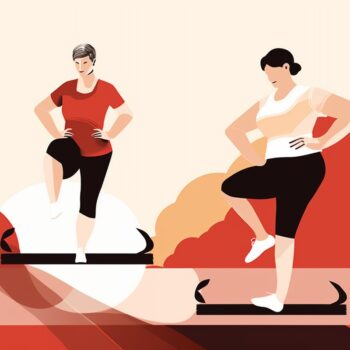 Menopause Macro Calculator
Menopause Macro Calculator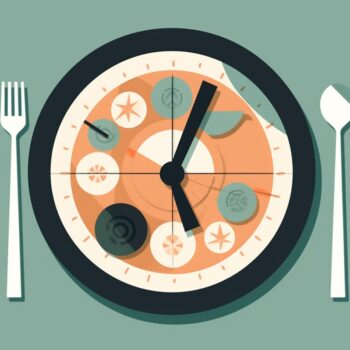 Intermittent Fasting Calculator
Intermittent Fasting Calculator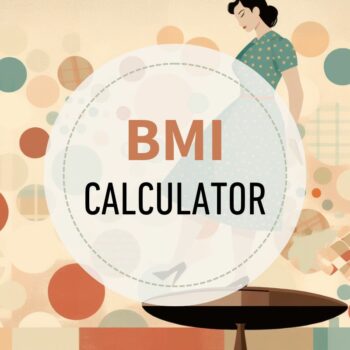 BMI Calculator
BMI Calculator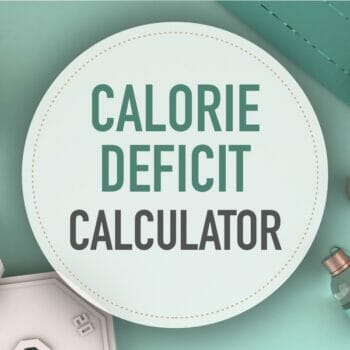 Calorie Deficit Calculator
Calorie Deficit Calculator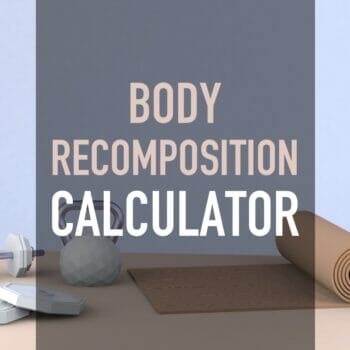 Body Recomposition Calculator
Body Recomposition Calculator
Hi Ted,
I have been trying to lose the last 15 pounds of baby weight that I gained during my pregnancy and have a about 10 more to go. I am attempting to really dial into macro counting but have had several calculators give me different info. I am 5’5, 139 pounds, lift 5 days a week, and am also still exclusively breastfeeding. Any advice to get the most accurate results? Thanks.
Hi Lauren, Great! Please read this article which I recently wrote on this subject: https://healthyeater.com/pregnancy-breastfeeding-flexible-dieting-iifym
Hi Ted, I am very new to flexible dieting. I am 54 years old, 5’6″ and weigh 138 lbs. A trainer recently calculated my macros as 40% carbs & protein and 20% fats. The trainer suggested less cardio and more weight lifting. Since I want to increase lean muscle and loose fat, do those macros sound right?
Hi Jen, Welcome! Sort of. Our calculator defaults fat at 25% and protein % is in relation to your body weight, which is recommended instead of an arbitrary amount like 40%. Otherwise, you could be eating more than is necessary. We have a lot of resources here to help you make sense of everything including my books. All the best getting started!
Hi Ted, I am also very new to flexible dieting. I am 5’6″, 138 lbs, and appear to be fit. However, I have more body fat than I’d like. A trainer put me at 1600 cal/day and 40% protein, 40% carbs, 20% fat. She said this should work while I focus on lifting heavier weights in order to build more lean muscle. Does this sound right?
Hi Ted, I’m new to the flexible dieting and lost my first 70lbs by simple cutting calories. I’m at a standstill with about 15lbs to go. I’m currently 5’4 and 149lbs. I already have a lot of muscle and would like to maintain that while getting lean. I lift heavy 60-90 mins, 5 times a week. My job is pretty sedentary though. What activity level should I use? I was doing 1400 as my base and then adding back what I burned during workouts but I’ve had no progress recently. Thanks in advance.
Hi Angel, You probably are eating too much aren’t eating enough. It looks like your sedentary TDEE should be around 1470. It seems like the fluid method is best because your weight training varies. What’s your typical calorie burn from your workouts?
Good evening! Thank you so much for your information! I have used MFP before and have my Fitbit synced with it. Should I continue to do so even with my adjustments based on the calculator, or should I unsync it? I typically walk or jog and get 15,000-20,000 (total day) steps 6 days a week.
Hi Amanda, If you adjust for exercise with the calculator then you can’t track exercise with MFP. Set it to sedentary if you want to track. Also, FitBit has been shown to over-estimate calorie burn so be careful of that.
i notice your figures are quite different from the original IIFYM website, do you know why your numbers are much higher in macros? Even though yours seam more ideal i was just wondering.
Hi Cheryl, They use a different formula and have different settings than we do by default. I feel theirs is a bit too complicated to know what is best. 1000’s have had great results with our formula and I use it myself. As for “original”, That’s debatable lol and we don’t blast you with 50 advertisements 🙂
I agree with you, there’s do seem complicated and it was questionable for me. Thanks for the response and I do stand corrected, Healthyeaters are the originals at best!!!!
I have just started counting macros. I a 32yro female, 5ft tall, weight 106 and 23% body fat. It says I need 209g of carbs a day….this coming from a low carb diet for years! Is that too much? I train (weights and hiit )4-5 days per week and I’m a dental hygienist so moderately active. I thought I would do the lose 20 for 3 days then lose 10 on day 4 and cycle through. Bad idea or good idea? Thanks!
Hi Heather, You seem like you are already at or close to a good target weight for your height: https://www.freedieting.com/tools/ideal_body_weight.htm I would recommend doing no more than a 10% calorie deficit to fine tune. As for the carbs, they’ll help you with your workouts and I think you’ll love being able to eat them again.
I love the macros calulator and love the idea of flexible dieting. Is there a way to incorporate carb cycling in addition to counting macros? How would you switch up the numbers that your calculator gave me?
Hi Heather! With flexible dieting your carbs increase with the amount of exercise you do. So having a few sets of macros i.e. rest day and exercise day, you’ll be eating more carbs when they are needed. You can also do the fluid approach using your sedentary macros as the base and then track your exercise and eat those calories back. All of this is in relation to your desired goal of course.
Hi Ted,
I’ve been tracking my macros for about 6-8 months now and am still struggling to find my sweet spot for carbs. I’m not carb sensitive but my body also likes fat. Ive been doing 35% fat and I’ve also been eating around 150g protein and I weigh 126 lbs and roughly 15% body fat. I work out 5x per week via weight training…. Should I use the lean mass formula? Also is it really possible to gain muscle and lose fat on the 10% fat loss option? Are my macros relevant got wanting to lose but gain at the same time? I appreciate any insight you have! Alexa
Hi Alex, You are already pretty lean for a female (the ACE body fat chart would classify you as an athlete) so the lean mass setting would be appropriate. The 10% option is a good starting point for trying to lean out and still grow muscle. Seems like you are overdoing it on the protein a tad. You really only need 1 gram per pound. Eat those carbs, they help fuel your workouts and you’ll feel better during and after if you do. Also please check out the muscle gain edition of my ebook here: https://healthyeater.com/macro-solution
Hi Ted.
I’m a 49, 5′ 7″, 158lb menopausal female. I’ve used Myfitnesspal and tracked macros for many years but never in a flexible way except for when carb-cycling but that’s based on which carb day it is and not based on each day’s activity level.
A little background..At my heaviest I was 230 in 1995 and through dieting and exercise I got down to 140.5 at my lowest a few years ago. I was maintaining around 142ish until last year. Over the past few months I’ve gained to where I am and not only the pounds but a lot of inches have found their way to my once lean body. For years I did at-home dvd workouts such as P90X, Turbo Fire, Insanity (until that one broke a chip in my ankle), etc but last December I had surgery on both knees to repair a partial torn meniscus in my knee and to clean out a lot of bad cartilage in both knees. With the cartilage issues i no have I can’t do those workouts anymore which always gave me great results and allowed me to be able to eat more of the junk food I have a hard time keeping myself from. I have a horrible sugar addiction and find myself binging a lot lately. I now have to go to the gym since the elliptical and bike are the only “cardio” I can do. My knees are finally okay to do squats (have to be careful) but lunges are out of my life forever.
Anyhoo, my question is about adjusting my protein %. I’ve been working with a personal trainer occasionally the past 2-3 months and he trains circuit style. The days I’m on my own, I start with approx 30 mins on the ellip, maybe 10 mins on the bike and then I’ll do one of the circuits we’ve done before. Each circuit has some strength training aspect in them so I’m wondering if I should use the high protein adjustment or normal. Here are a couple of the circuits to give you an idea. I typically do 2-3 sets of each and weights are usually 10-15 lbs depending on the move.
Circuit 1 Circuit 2
Getups w/ Press (15lb) Back row (20ls)
Mountain climbers Chest press (15lb)
Deadlift w/ upright row (15lb) Sit-up with front raise (5lb)
Windmill (10lb) Battle rope (2-2 mins)
Slamdowns (15lb ball) Deadlifts (15lb)
Wall balls (10lb) TRX bicep
(plus ab work) TRX tricep
Planks
Glute roll-ins (stability ball)
Does this classify as having a a strength training component?
Thanks!
Oops the circuits didn’t post the way I typed them.
Hi Leslie, I think you could use the high protein setting based on what you described. Make sure you are gradually adding weight to your movements and not doing the same weight all the time. Great job on your previous weight loss! You’ll get there again and I think flexible dieting will help.
hey! I am really interested in learning to count my macros, but the dailly calorie part says around 1560 calories… but that doesn’t seem t be a lot? daily I burn around 200-300 sometimes 400 through exercise… but only 1560? that seems low… what do you think I should do? add more calories? or what? thanks in advance.
Hi Ted,
I love your articles and this calculator. I’ve been trying to explain these principles to both my sisters in law and my mother in law as they all struggle with their weight and healthy eating. I will definitely reference your website next time I discuss this with them ?
Now to my background and question. I’ve been using MyFitnessPal off and on over the years whenever I feel my diet has gotten a bit off track and I love it although I do find it somewhat time consuming. I’m 31 years old, 68 inches tall, 166 lbs with 28.1% body fat. I’d like to get below the 160 mark but I continue to build muscle so I think reaching 155 lbs isn’t a realistic goal, therefore I chose the lose 10% option. I teach group fitness classes 3 days a week (HIIT with decently heavy weights) and easily burn 800 calories in an hour class according to my Polar heart rate monitor. The other 3 days a week, I’ll either participate in a class or hit the weight floor for some supersets and typically burn 500-600 calories each session there. I usually have one rest day a week although sometimes my toddler not sleeping well forces me to take a second rest day. I think my teaching days would be classified as very active (2396 cal), my regular workout days are moderate (2153 cal) and my rest days (because I run around after a toddler) are lightly active (1910 cal). I understand that I should use the calculations for the appropriate activity level for each day but my question has to do with logging my food/exercise into MFP. Because I can’t afford to purchase the premium app, I need to find a way to work around the basic one. Would it be best for me to set my calorie goal for a lightly active day and then log my activity each day to increase my macros accordingly? Or should I split the difference, set it to moderately active and just eat extra on my teaching days? Also, if my activity level is set for moderate I suppose it’s already taking my activity level into account in my net calorie goal but if I log a 600 cal workout MFP then increases my macros and would I then be eating too much that day? My apologies for the novel and convoluted questions. Cheers!
Hi Sabrina,
Thanks and please also refer people to my books 🙂 I think you should go with the fluid approach if using MFP. Use your light activity as your base and then track your exercise. Just make sure you cap your protein at no more than 1 gram per pound of body weight in your case. Another option is to use the MyMacros+ app if you have an iphone. It allows multiple sets of macros. I just wrote about it here. https://healthyeater.com/mymacros-iifym-flexible-dieting
Thanks for getting back to me so quickly Ted! I plan on picking up your books for myself as well ?